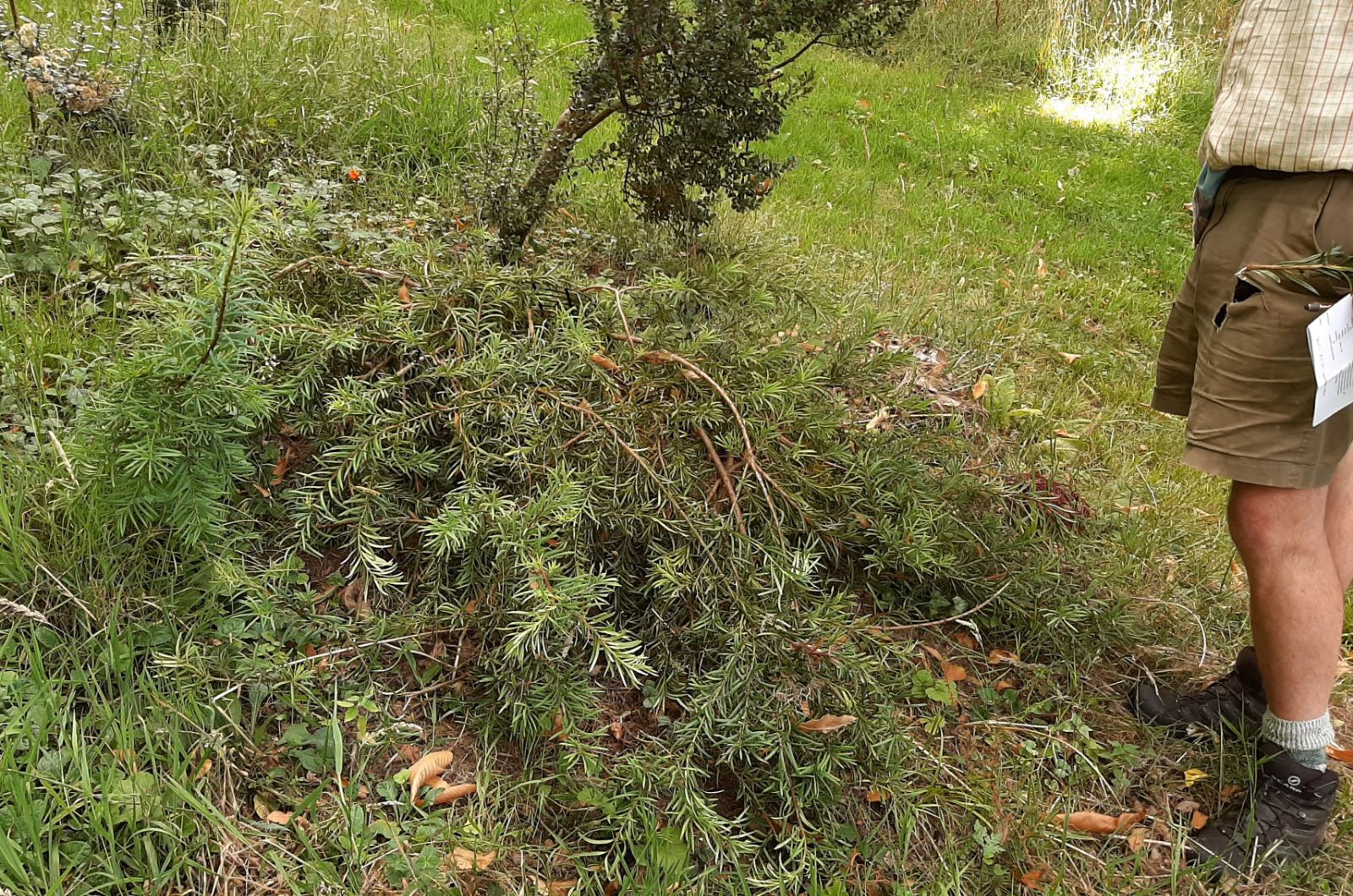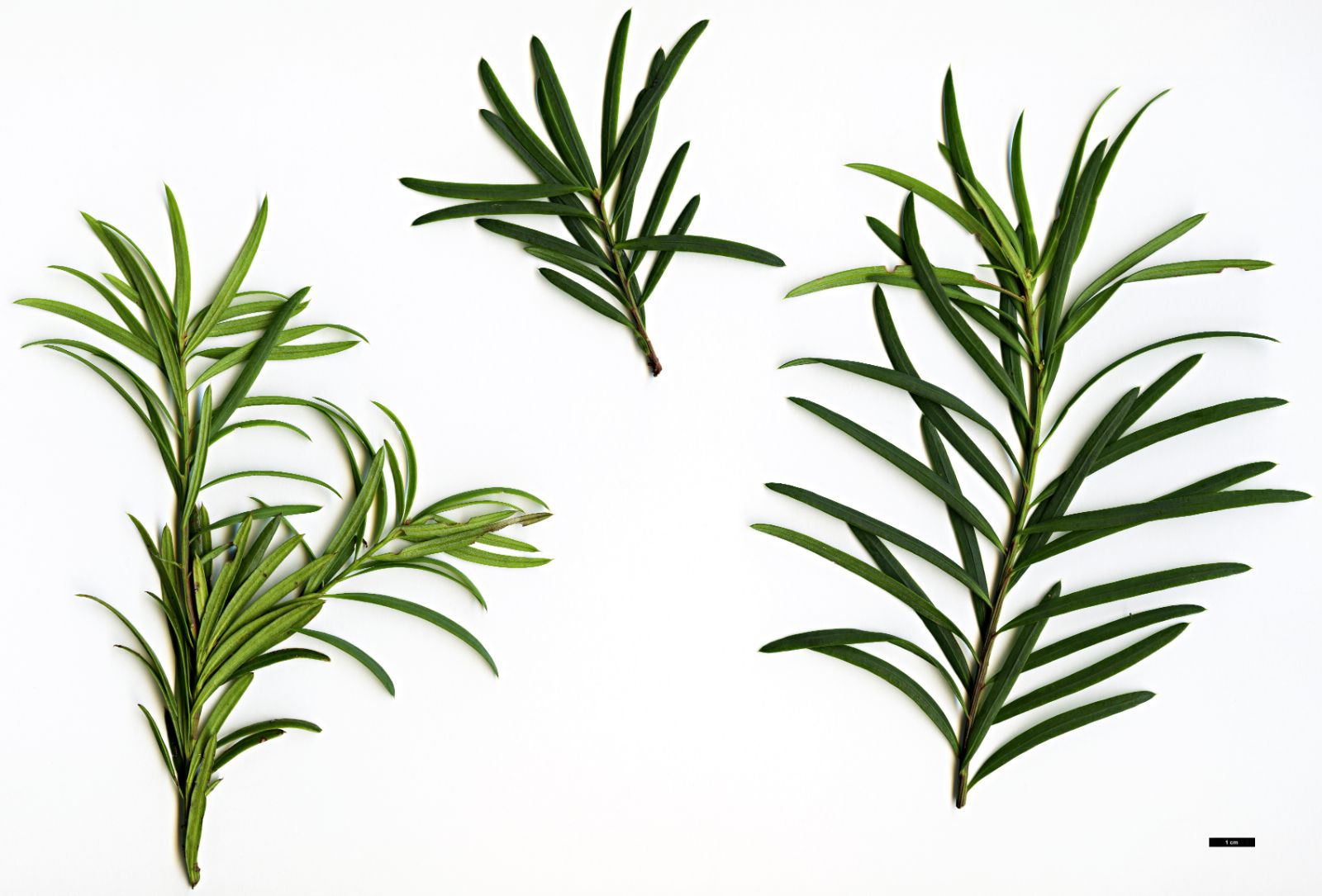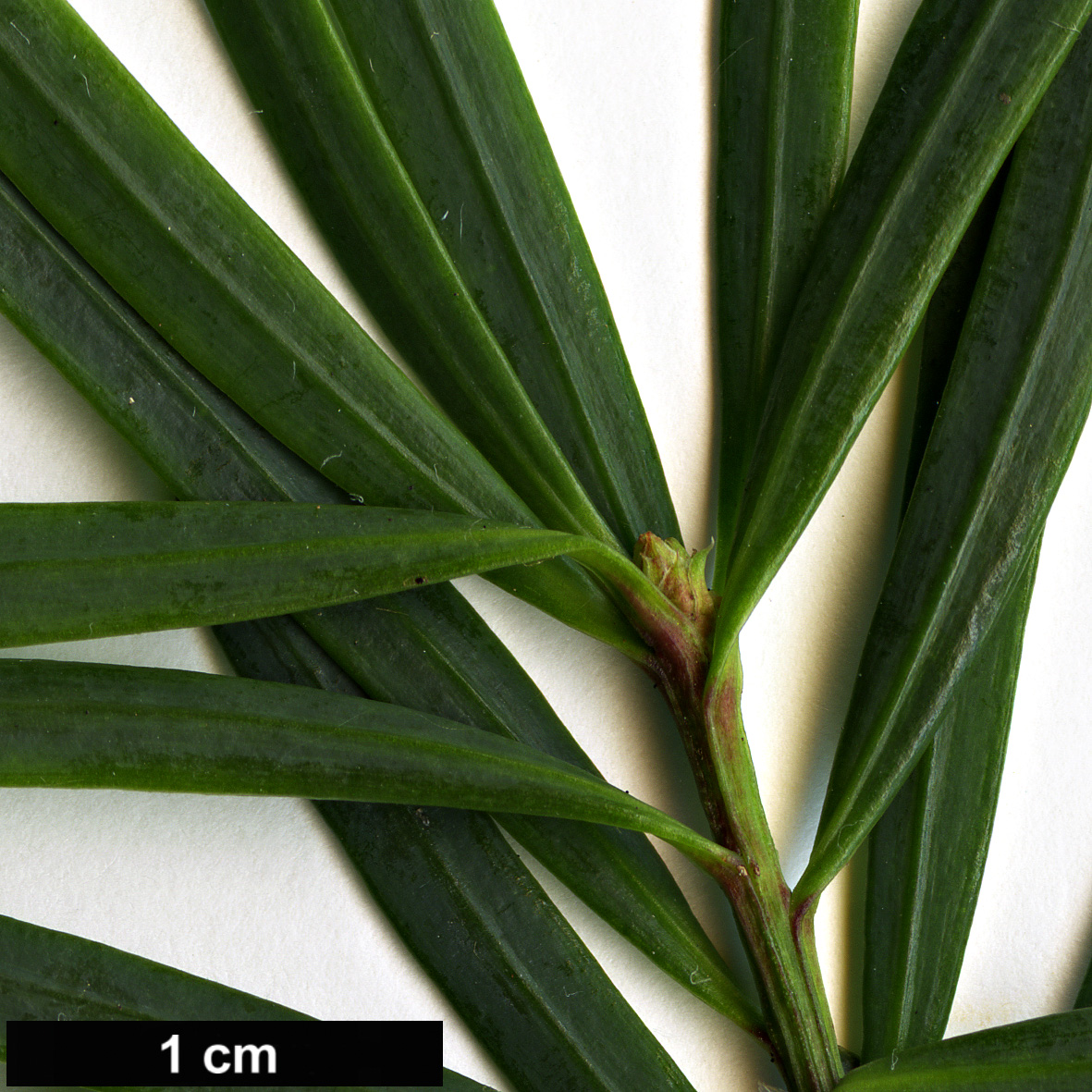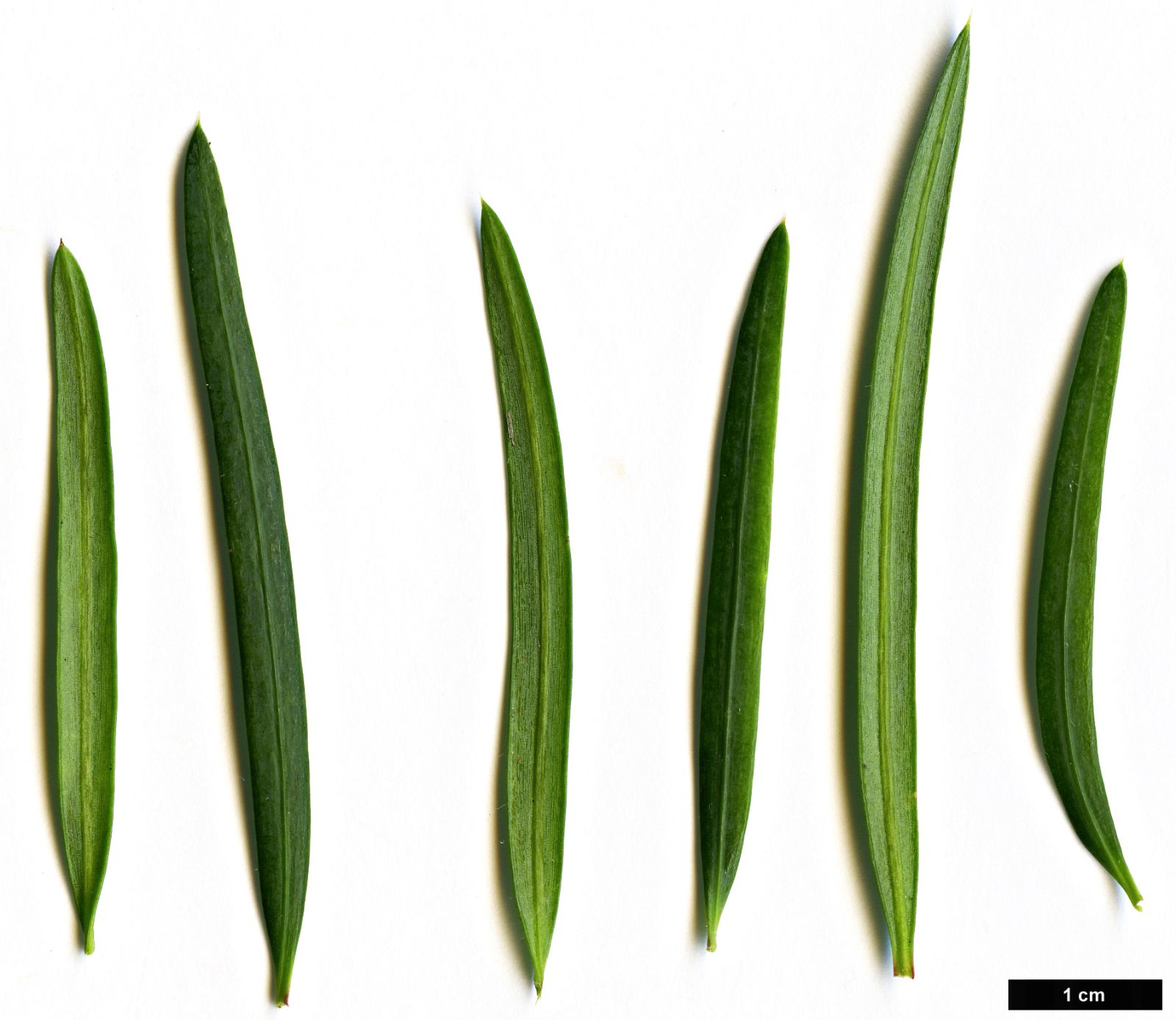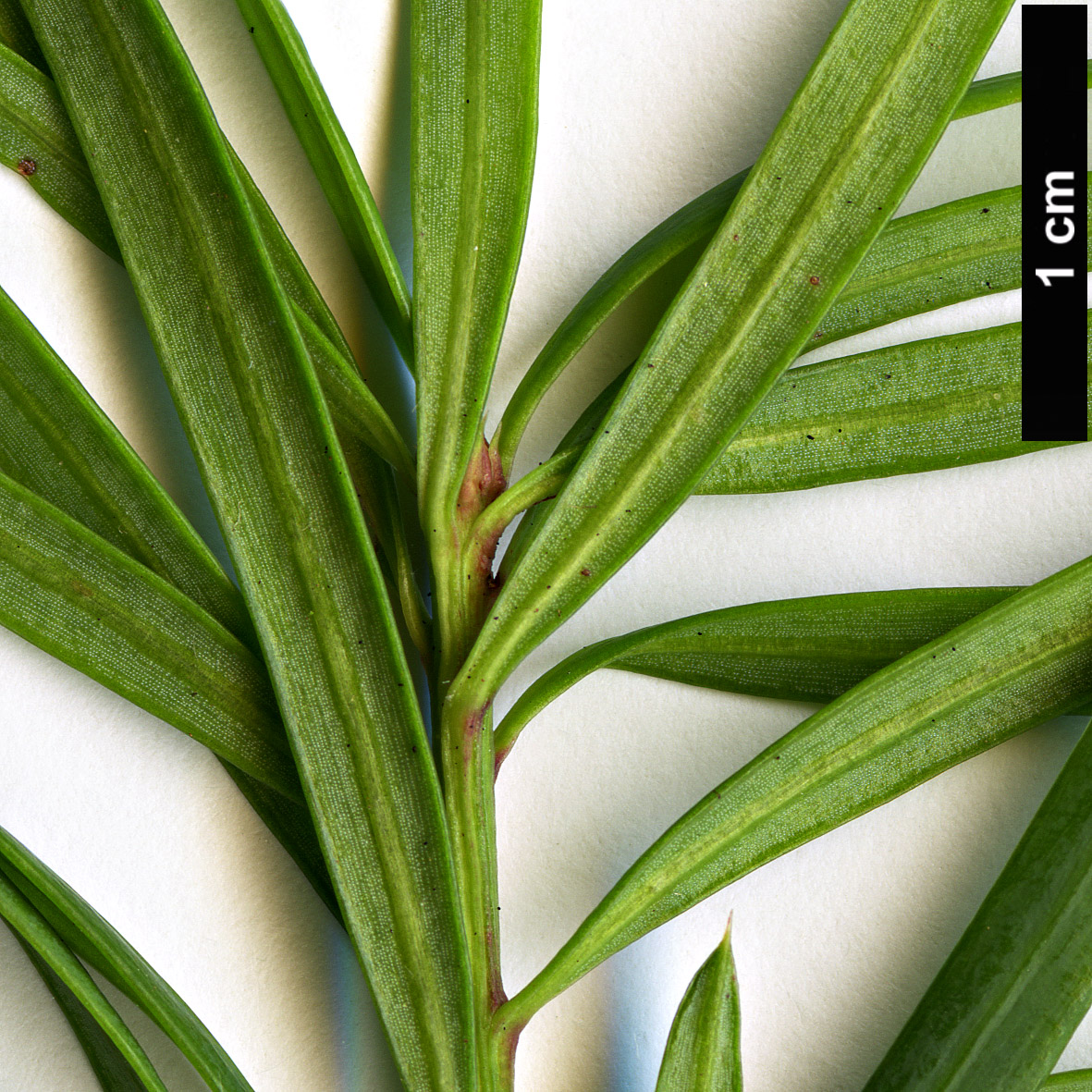Podocarpus drouynianus
Sponsor
Kindly sponsored by
The British Conifer Society in memory of Derek Spicer VMM, founder member.
Credits
Tom Christian (2023)
Recommended citation
Christian, T. (2023), 'Podocarpus drouynianus' from the website Trees and Shrubs Online (treesandshrubsonline.
Other taxa in genus
- Podocarpus acutifolius
- Podocarpus acutifolius × lawrencei
- Podocarpus acutifolius × nivalis
- Podocarpus acutifolius × totara
- Podocarpus brassii
- Podocarpus costalis
- Podocarpus elatus
- Podocarpus elongatus
- Podocarpus guatemalensis
- Podocarpus henkelii
- Podocarpus laetus
- Podocarpus laetus × nivalis
- Podocarpus lambertii
- Podocarpus latifolius
- Podocarpus lawrencei
- Podocarpus lawrencei × nivalis
- Podocarpus macrophyllus
- Podocarpus matudae
- Podocarpus milanjianus
- Podocarpus nakaii
- Podocarpus neriifolius
- Podocarpus nivalis
- Podocarpus nubigenus
- Podocarpus oleifolius
- Podocarpus parlatorei
- Podocarpus pilgeri
- Podocarpus pseudobracteatus
- Podocarpus salignus
- Podocarpus spinulosus
- Podocarpus totara
Multistemmed shrub 1–3 m, prone to sprouting from root suckers to form dense thickets several metres wide with main stems erect. Bark fibrous, thin, initially green, maturing reddish-brown. Branchlets slender, smooth or with shallow striate grooves. Terminal buds conical, 2–4 × 1.5–3 mm with narrowly triangular slightly spreading scales. Leaves linear, 3–9(–13) × 0.2–0.5 mm, sessile, base broad decurrent, upper surface with midrib obtuse but conspicuous only in the lower part of the lamina, midrib obtuse and prominent beneath the full length of the lamina with prominent stomatal bands either side. Pollen cones solitary or in clusters of 2–6 on a common peduncle, peduncle 10–25 mm bearing reduced scale leaves, cylindrical, slender, (5–)10–22 × 2–5 mm at maturity. Seed cones solitary, on peduncles 10–20 mm long, with two bracts which fuse to become a swolen, fleshy, receptacle 20–25 × 10–13 mm, pruinose-purple at maturity; seed including the epimatium ovoid, green to purplish-green, 12–20 × 8–12 mm. (Farjon 2017).
Distribution Australia SW Western Australia
Habitat A shrubby component of the understorey of lowland Eucalyptus marginata and E. diversicolor forests, usually on sandy soils.
USDA Hardiness Zone 9
RHS Hardiness Rating H3
Conservation status Least concern (LC)
The shrubby Podocarpus drouynianus is native to a part of SW Western Australia that never sees frost. It occurs there as a understorey component of forests dominated by Jarrah (Eucalyptus marginata) and Karri (E. diversicolor). These forests are relatively moist, generally receiving >600 mm rain per year. Like Jarrah, P. drouynianus can regenerate from its root system after fire and this is an important means of recolonisation (Farjon 2017).
Like so many podocarps from frost-free areas this species has only a toehold in cultivation in our area. It is represented by a few plants at Tregrehan (Cornwall, UK) that were obtained from Maurice Foster c. 2005. Material was perhaps circulating more widely in Europe at about this time, for a few years earlier a plant of cultivated origin was accessioned at the Royal Botanic Garden Edinburgh under this name (20010141), a cutting of which was later donated to the Jardin des Plantes in Paris (Royal Botanic Garden Edinburgh 2023).
The plants at Tregrehan have survived occasional frost seemingly unharmed, but show no signs whatsoever of producing any upright growth, with young stems soon arching over, or growing sideways. Tom Hudson believes that it might fare better in sunnier conditions than Tregrehan can provide ‘such as along the English south coast or Isle of Wight’ (Smith & Hudson 2017) but this theory is yet to be tested.

